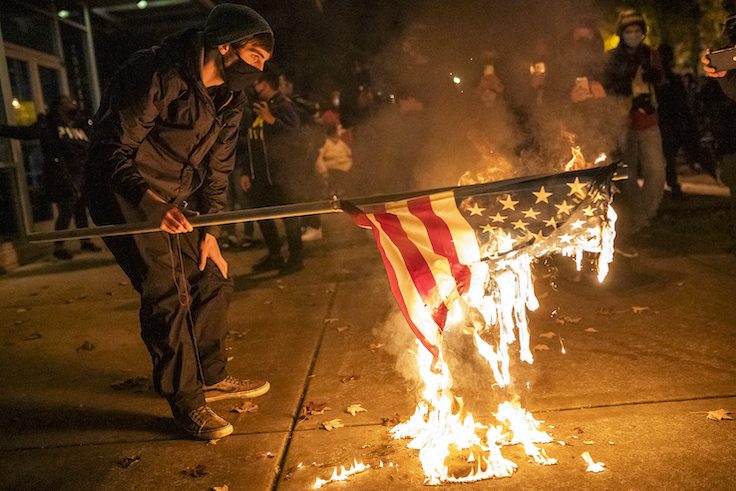Violence erupted nearly 600 times during protests in America's largest cities this past summer, resulting in the injury of more than 2,000 police officers.
Those are the findings of a recently released survey of the Major Cities Chiefs Association, the professional association representing the police chiefs in America's 68 largest cities. MCCA agencies reported some 8,700 protests between the death of George Floyd on May 25 and the end of July, with some cities seeing over a thousand protests in that two-month period.
The report offers one of the first estimates of the scale of the disorder that swept the nation in June and July, as well as the impact it had on police departments. "The sheer volume of protests," the report explains, "combined with the level of civil disobedience and existence of some ultra-violent events, created an extraordinarily challenging environment for law enforcement agencies."
That environment likely also contributed to nationwide spikes in violent crime, as well as a wave of police retirements and resignations across cities big and small. And it has yet to abate: Eighty-five percent of departments reported protests are still ongoing.
Of the protests its member cities saw, the MCCA estimates that roughly 7 percent were violent, confirming a previous estimate from Wisconsin-based nonprofit the Armed Conflict Location & Event Data Project. But that violence was widespread, with reporting agencies seeing violence at an average of 10 percent of protests. Violence was particularly common when out-of-state protesters appeared at protests, and from "far left" protesters, whom 78 percent of departments reported seeing.
A further 42 percent were classified as nonviolent civil disobedience. But those acts were not necessarily free of danger, including "the takeover of a freeway or roadway, blocking traffic, and refusing to cooperate with lawful orders." These actions, the MCCA reports, "still posed a danger to innocent bystanders" and sometimes "resulted in confrontations and violence."
Many of those harmed were officers on duty. Seventy-two percent of agencies saw officers injured between May and July, totaling over 2,000—one agency saw 50 injured in a single week. MCCA members reported the widespread use of rocks, bricks, frozen bottles, fireworks, poles, and bats to assault officers. Ninety-seven police cars were also burned. By comparison, agencies reported using nonlethal methods of crowd control in just 2 to 3 percent of protests, less than half of the number of protests that turned violent.
The protests did lead to widespread arrests: more than 16,000, including 2,735 for felonies. But half of agencies reported that their local district attorneys mostly refused to prosecute protesters, even those engaged in felonies. And the money poured into bail funds across the country freed many of those temporarily jailed, allowing them to attend the next protest and reoffend.
This situation has likely contributed to two major trends: a collapse of police morale and a rise in violent crime. The MCCA found that 55 percent of agencies reported low or very low officer morale. That, along with widespread budget cuts, explains why half of America's big cities have seen officers or chiefs retire or resign since the beginning of the year.
The resource demands of continued, massive protests are likely also a driving factor in the homicide and violent crime spike some cities saw over the summer. In Minneapolis, the onset of protests corresponded with a rise in gun violence and a steep drop in police stop-and-frisk activity. And in New York City, arrest rates plummeted following the protests, allowing a similar shooting problem to go unrestrained.
